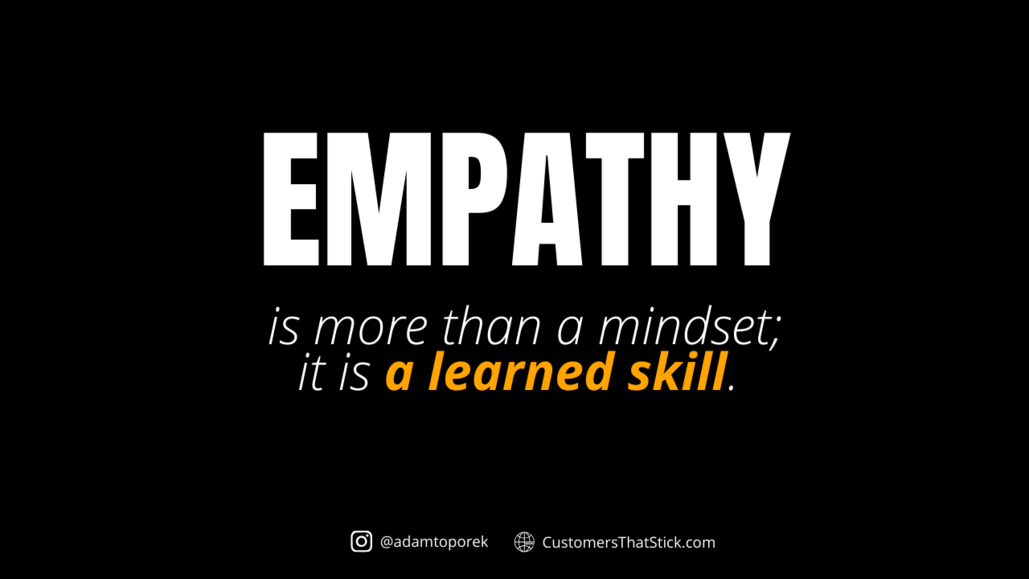
Empathy requires more than a shift in mindset; it requires a specific set of skills
As a customer experience strategist and customer service trainer, empathy has always been a cornerstone of our approach to customer experience and service.
Customer experience is difficult and is defined more than anything by human emotion. Having teams that understand how to both have and demonstrate empathy is essential to delivering Hero-Class® service.
Listening to much of the talk about empathy in recent weeks, I’ve noticed that a key piece of the empathy puzzle is often missing, a crucial aspect of helping others become more empathetic.
Most of the discussions I have heard lately have focused on shifting mindset, simply trying to have more empathy by attempting to understand the other person’s perspective, their journey, and most importantly, their feelings.
This openness and willingness to understand others is a crucial first step to empathy.
However, once a person commits to this mindset, they are confronted with the very real challenge of how to approach this change.
For, empathy requires not only a shift in mindset but a specific set of skills that help facilitate the changes in perspective and understanding that lead to empathy.
Empathy requires not only a shift in mindset but a specific set of skills.
Let’s look at three crucial skills for facilitating empathy:
Of course, the above ideas do not encapsulate everything that is needed to be better at empathy; but they are three big rocks that, if not innate in a person, must be learned for someone to practice empathy well.
At the heart of the above three ideas is an old principle from Stephen Covey’s The 7 Habits of Highly Effective People: Seek first to understand, then to be understood. In fact, I often use Covey’s famous story of the screaming kids on the subway in our trainings.
A group of kids were screaming and acting rambunctious one morning on a subway car, and the father didn’t seem to care. Covey got in a huff, assuming the worst, and said something to the distracted father. When Covey learned that the kids’ mother had just died, he had an immediate change of perspective and heart.
This story perfectly captures the links among automatic preconception, listening and understanding, and empathy.
The openness and skills to have and demonstrate empathy are distributed much like any other characteristic in a population. Some live their everyday lives as open-hearted empaths, some lack the capacity to feel it at all, and the great majority are in the continuum between.
For most, empathy is not a switch you can flip. True, it requires an opening of the mind and of the heart, but it also requires a set of, sometimes, unfamiliar skills.
If we want to increase empathy in this world, we have to help people acquire the skills to both hear the stories of others and to understand how to quiet their own stories long enough to do so.
© 2011-2023 CTS Service Solutions, LLC.
All rights reserved.
Legal Information | Privacy Policy
How to Cite this Site